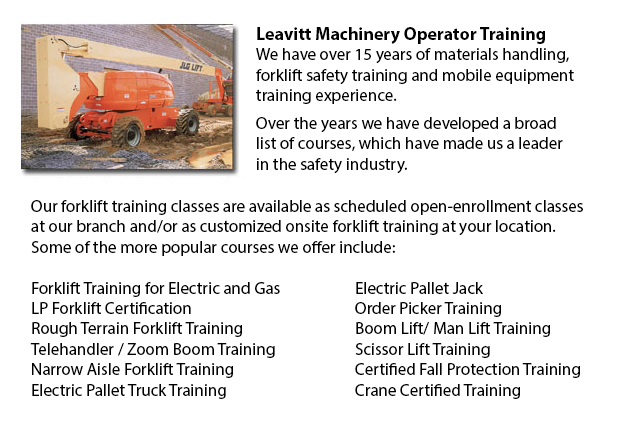
Saskatoon Aerial Platform Training - Aerial platform lifts are able to accommodate many odd jobs involving high and hard reaching spaces. Often used to complete routine upkeep in structures with elevated ceilings, trim tree branches, raise heavy shelving units or fix telephone lines. A ladder might also be utilized for some of the aforementioned jobs, although aerial hoists offer more safety and strength when correctly used.
There are several designs of aerial lifts available on the market depending on what the task required involves. Painters sometimes use scissor aerial jacks for example, which are classified as mobile scaffolding, effective in painting trim and reaching the 2nd story and higher on buildings. The scissor aerial hoists use criss-cross braces to stretch and lengthen upwards. There is a table attached to the top of the braces that rises simultaneously as the criss-cross braces elevate.
Container trucks and cherry pickers are a different kind of aerial hoist. They possess a bucket platform on top of an extended arm. As this arm unfolds, the attached platform rises. Forklifts utilize a pronged arm that rises upwards as the handle is moved. Boom lifts have a hydraulic arm that extends outward and elevates the platform. Every one of these aerial lift trucks call for special training to operate.
Training programs offered through Occupational Safety & Health Association, known also as OSHA, embrace safety methods, machine operation, maintenance and inspection and device cargo capacities. Successful completion of these training programs earns a special certified license. Only properly qualified people who have OSHA operating licenses should run aerial lift trucks. The Occupational Safety & Health Organization has formed guidelines to uphold safety and prevent injury when utilizing aerial lifts. Common sense rules such as not utilizing this machine to give rides and making sure all tires on aerial lift trucks are braced so as to hinder machine tipping are noted within the guidelines.
Regrettably, data illustrate that in excess of 20 operators pass away each year when running aerial hoists and 8% of those are commercial painters. Most of these mishaps are due to inappropriate tire bracing and the lift falling over; therefore many of these deaths had been preventable. Operators should make sure that all wheels are locked and braces as a critical security precaution to stop the device from toppling over.
Additional guidelines involve marking the encircling area of the device in an obvious way to safeguard passers-by and to ensure they do not come too close to the operating machine. It is vital to ensure that there are also 10 feet of clearance between any electrical lines and the aerial hoist. Operators of this equipment are also highly recommended to always wear the appropriate security harness when up in the air.
-
Saskatoon Telehandler License
Saskatoon Telehandler License - The telescopic handler or telehandler is a frequently utilized machine in agricultural and industrial applications. This particular equipment is similar in appearance to a forklift and even functions in a similar way,... More -
Saskatoon Zoom Boom Ticket
Saskatoon Zoom Boom Ticket - Zoom Boom Training focuses on correctly training prospective operators on variable reach forklifts. The training objectives consist of gaining the knowledge of the machine's physics and to define the job of the operator.... More -
Saskatoon Forklift Operator Training
Saskatoon Forklift Operator Training - In North America, lift truck operator training is needed in order to prevent workplace injuries and accidents. Particular lift truck training will be provided to offer forklift operators driver training. The saf... More -
Saskatoon Forklift Certification Schools
Saskatoon Forklift Certification Schools - Forklift Certification is mandatory in North America. Hence, forklift training programs are essential both for businesses and for individuals seeking jobs in industries as forklift operators. Forklift traini... More -
Saskatoon Telehandler Training Courses
Saskatoon Telehandler Training Courses - Employers are responsible for making certain that their operating personnel and supervisors are trained to work competently utilizing telehandler machines. The competence level of staff must be assessed. If de... More -
Saskatoon Boom Lift Training
Saskatoon Boom Lift Training - Aerial platforms or likewise known as elevated work platforms are devices that enable workers to perform tasks and duties at elevated heights that will not be otherwise accessible. There are many aerial lifts available... More -
Crane / Overhead Crane / Self-Erect Crane / Truck Mounted Crane / Hydraulic Cranes Training in Saskatoon
Overhead cranes are likewise referred to as bridge cranes. They are a type of crane which comprises a line and hook device that runs along a horizontal beam which runs along two widely separated rails. Several overhead cranes can be found within a lo... More -
Saskatoon Heavy Equipment Training Programs
Saskatoon Heavy Equipment Training Programs - At any given construction site, there are usually different types of machinery which are ready to be used. These light and heavy machinery require both operators to run them and mechanics to fix them. Tra... More

Forklift Certification Saskatoon
TOLL FREE: 1-888-254-6157
Saskatoon, Saskatchewan
forkliftcertificationsaskatoon.com
Email Us
About Us


